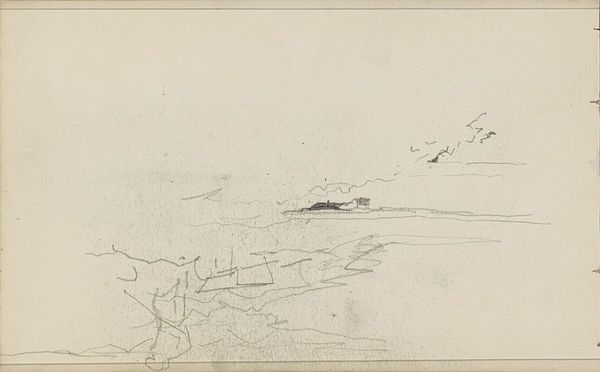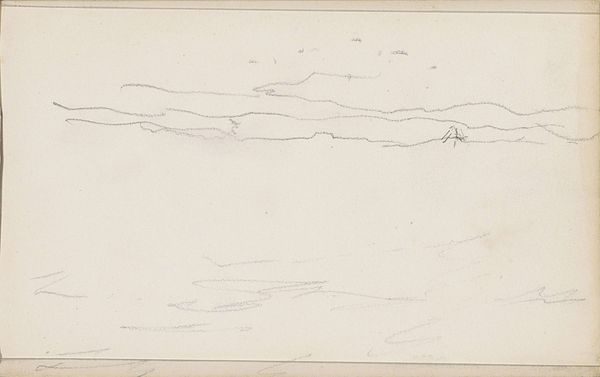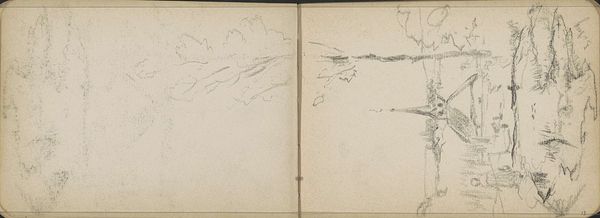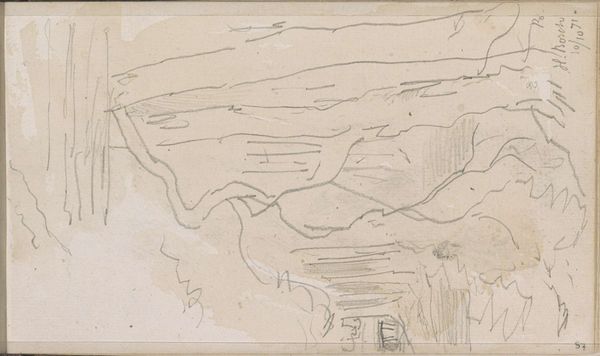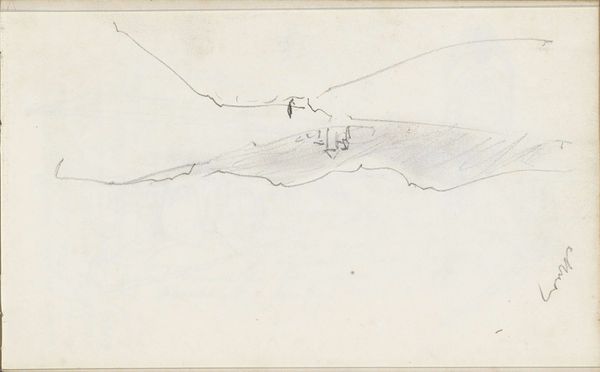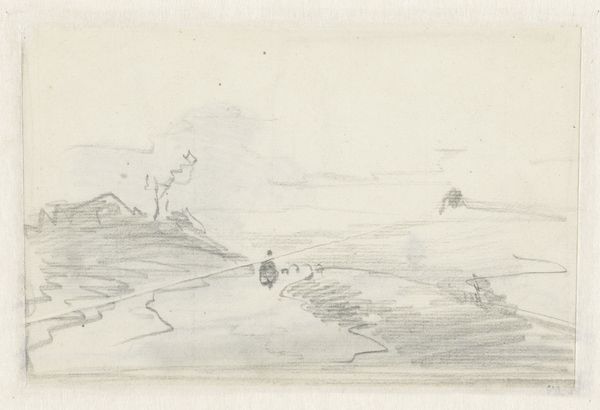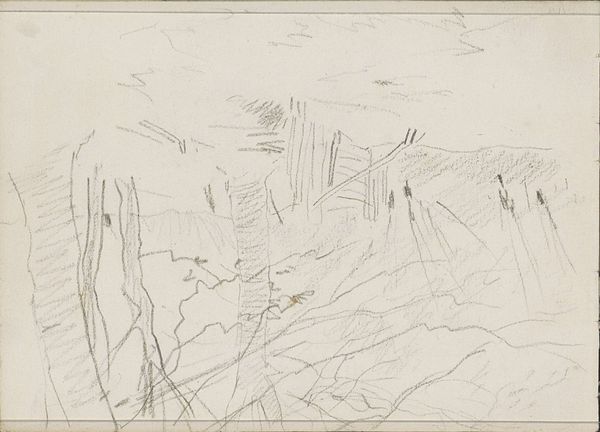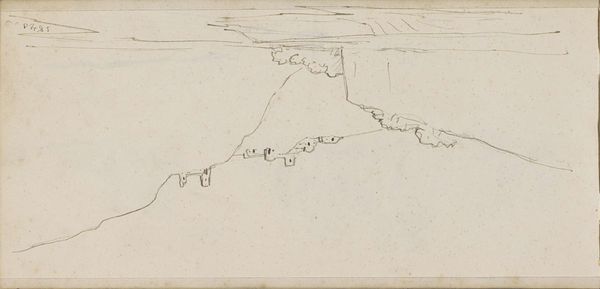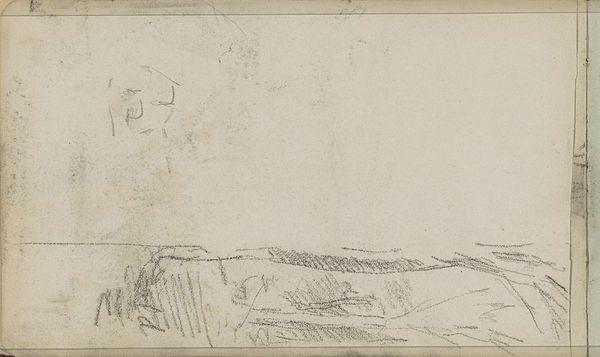
drawing, paper, pencil
#
drawing
#
landscape
#
paper
#
pencil
#
line
#
realism
Copyright: Rijks Museum: Open Domain
Curator: Welcome. We're looking at a drawing by Louis Apol from 1880, titled "Landschap, mogelijk bij Hammerfest," which translates to "Landscape, possibly near Hammerfest." It's a pencil drawing on paper, currently held in the Rijksmuseum collection. Editor: It’s spare, almost desolate. Just the barest indication of form, all rendered in these delicate, tentative lines. There’s a rawness here. It gives me the sense of cold and the sublime all at once. Curator: Apol was known for his winter landscapes, and this piece exemplifies his ability to capture the essence of the Arctic. Hammerfest, being one of the northernmost cities in the world, represents a place where humanity exists on the edge of a vast, indifferent nature. His social circles in The Hague involved naturalists dedicated to portraying such untouched places. Editor: That socio-political element of 'untouched nature' is precisely what intrigues me. Who gets to define what is untouched, and what ideological baggage comes with that concept? It’s a deceptively loaded term, particularly when considering colonial and capitalist expansion into such landscapes in the late 19th century. Were such places ever *really* “empty?" Curator: I agree that we should be cautious about the idea of 'untouched nature'. Apol himself likely sought to convey the experience of confronting the overwhelming power and scale of nature. Notice how his compositions minimize human presence? This became something of a trope in the Romantic era's depiction of such sublime landscapes. Editor: Precisely. Think about whose perspective this “sublime” is crafted for. Perhaps this reflects a male, Western gaze encountering environments outside of their typical, domestic experience, or a burgeoning sense of romanticized, natural supremacy in art of this time. Curator: I think there's merit in your interpretation. And if we consider how art institutions reinforced the aesthetic appreciation of this vision, this simple drawing can reveal wider historical and theoretical considerations about landscape, identity, and representation. Editor: Absolutely. Looking at Apol's sketch with those historical currents in mind transforms this small drawing from a landscape study into a site of rich interpretive tension. Curator: A valuable reminder that even seemingly simple landscape drawings engage with larger societal structures. Editor: And hopefully an opportunity to reconsider traditional aesthetic views that underpin it.
Comments
No comments
Be the first to comment and join the conversation on the ultimate creative platform.
